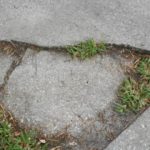You can live in a home that is healthier, more comfortable, less expensive and lasts longer—basically, a happier home! It’s a choice and a smart way to make a positive difference in the world. “Greening” your home is also a strong selling attribute of homes in Marin.
So, want to do something simple, cheap and incredibly important for our environment? This bright idea is just hanging around your home–cut your electricity consumption. If we decrease our electrical usage by 50%, we’ll basically cut our emissions from coal by 50%.
And, where does most of our electricity usage come from? …right in our homes. Sixty six percent of electricity generated is used for heating, cooling, and lighting buildings. It’s sobering to think that 1/3 of the world’s population still has no access to electricity, so cutting the US consumption will make a significant difference in decreasing the world’s greenhouse emissions.
First, let’s see how bright your energy knowledge bulb is…
True or False?
1. Most of your washing machine’s energy is used just to heat the water.
2. Your mom was wrong, opening the refrigerator door uses very little of it’s energy usage.
3. Most of the energy of the electricity used to power home electronics is consumed while the products are off.
4. Standard light bulbs produce more heat than light as they did in the past.
5. Solar is not the best energy source for electricity.
(Answers at end of article)
WHAT CAN YOU DO?
REFRIGERATOR–GET A NEW ONE
Consider buying a new refrigerator. In most places in the US, the fridge is the 2nd largest user of electricity, right after air conditioning. So here in Marin, where air conditioning is often provided free, it’s the first. With most appliances you save energy by using them less, but you can’t do that very well with your fridge. The main way to save money with this appliance is to use an efficient model. New refrigerators aren’t just a little more efficient, they’re incredibly more efficient. A 1986-era fridge uses 1400 kWh a year, while a post-2001 fridge uses only 500 kWh — a 64% savings.
WASHER–USE COLD WATER, FRONT LOADING
Washing your clothes in hot water instead of cold water for a year, wastes more electricity than leaving the refrigerator door open 24 hours a day for a year! Front-loading washers use 40-75% less water and 30-85% less energy than typical top-loaders.
ENERGY STAR
So, here’s a cool story about California. Back in 1976 California set a maximum amount of energy (1400 kilowatt hours per year) use for 18 -cubic foot fridges, over the protests of appliance manufacturers. After they finished protesting, appliance producers met the standard easily, and on time. Because California represented such a large share of the market, and the necessary improvements were so minimal, the appliance manufacturers applied that standard to their entire lines. California kept demanding more efficiency. Now, the criteria is 500 kWh….wow! So, not only are we doing our part by living in a cool state, we can do even more by picking Energy Star, government rated low kWh usage appliances.
LIGHT BULBS
Compact fluorescent bulbs, or CFLS, use 75 % less energy, last six times longer, generate less heat and reduce energy costs associated with cooling as compared to incandescent bulbs. Each bulb will save $30 or more in energy cost over its lifetime compared to standard bulbs.
BELIEVE
Let your light shine. Environmentalist Alex Steffen said, “Optimism is a political act. Those who benefit in the status quo are perfectly happy for us to think nothing is going to get any better. In fact, these days, cynicism is obedience.” So, believe each step you take, each bit of electricity you don’t use, will make a difference. Talking about believing, check out this cool link:
http://youtube.com/watch?v=42E2fAWM6rA
Answers to quiz: All TRUE….
1. 90% of a washer’s electrical consumption is to heat water.
2. Opening your refrigerator door may be irritating, but it only uses about 2% of it’s normal energy usage.
3. According to the Department of Energy, 75% of the electricity used to power home electronics are consumed while the products are turned off. It’s called a “Phantom Load”. Using power strips and sleep mode elevates this.
4. Incandescent light bulbs still produce more heat than light.
5. The best energy is the one you never use.

